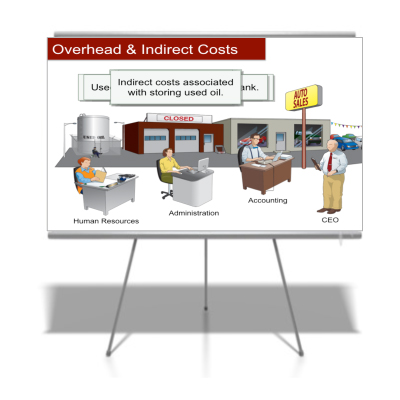Electronic presentation tools such as PowerPoint and Trial Director have changed the way in which lawyers and trial consultants present evidence to juries. These programs and others like them are so flexible and helpful in presenting numerical data, timelines, biological processes, the workings of machinery, and other information that in many ways they have displaced the old-fashioned methods such as printing words and graphics on foam core trial boards.
However, I believe that the printed and mounted foam core trial board is making a comeback and should return to the arsenal of trial presentation tools used by litigators – if it ever left at all.
After all, the purpose of any trial exhibit is the communication of information. The precise medium of communication is secondary. Any trial exhibit is designed to represent information that is relevant to the case in a way that fosters a believable and lasting impression with the judge or jury.
While most of our exhibits are electronic these days, we are still, in the appropriate cases, presenting exhibits on foam core where the situation calls for it.
When A2L was founded 16 years ago, we would go to court with hundreds of 40 inch by 60 inch trial boards for a single trial. Every document call-out, every photo and every other type of exhibit was printed. Rare was the use of electronic evidence. That changed gradually over the years, and now jurors, in every kind of complex case, in every region of the country, have come to expect to see fairly sophisticated electronic evidence in the courtroom.
Now, it is the trial board which is rare. Like a miniature poodle in a group of dogs of ordinary size, or a handwritten, signed letter in a sea of emails, a trial board stands out.
To a jury, a board is not something they are used to seeing. So when they see it, they pay attention to this special thing that has been crafted for them.
Foam core is a type of material that is ideally suited for trial boards. It consists of an inner layer of polystyrene with outer facing of white clay-coated paper. Trial exhibits are printed on a large format printer and mounted onto the foam core board. Optionally, they can be laminated to give the board a more finished look and additional strength. Printed trial boards can be easily displayed for viewing by judges and juries and will stand up to repeated handling, yet they are not overly expensive.
We now advise our clients to use foam core boards to draw attention to the key messages in their case. To us, documentary evidence is like the words of a sentence, demonstrative evidence is like the commas and trial boards are like the exclamation points.
To see more examples of our trial graphics click here.
To download free litigation consulting and trial consulting materials click here.






Leave a Comment